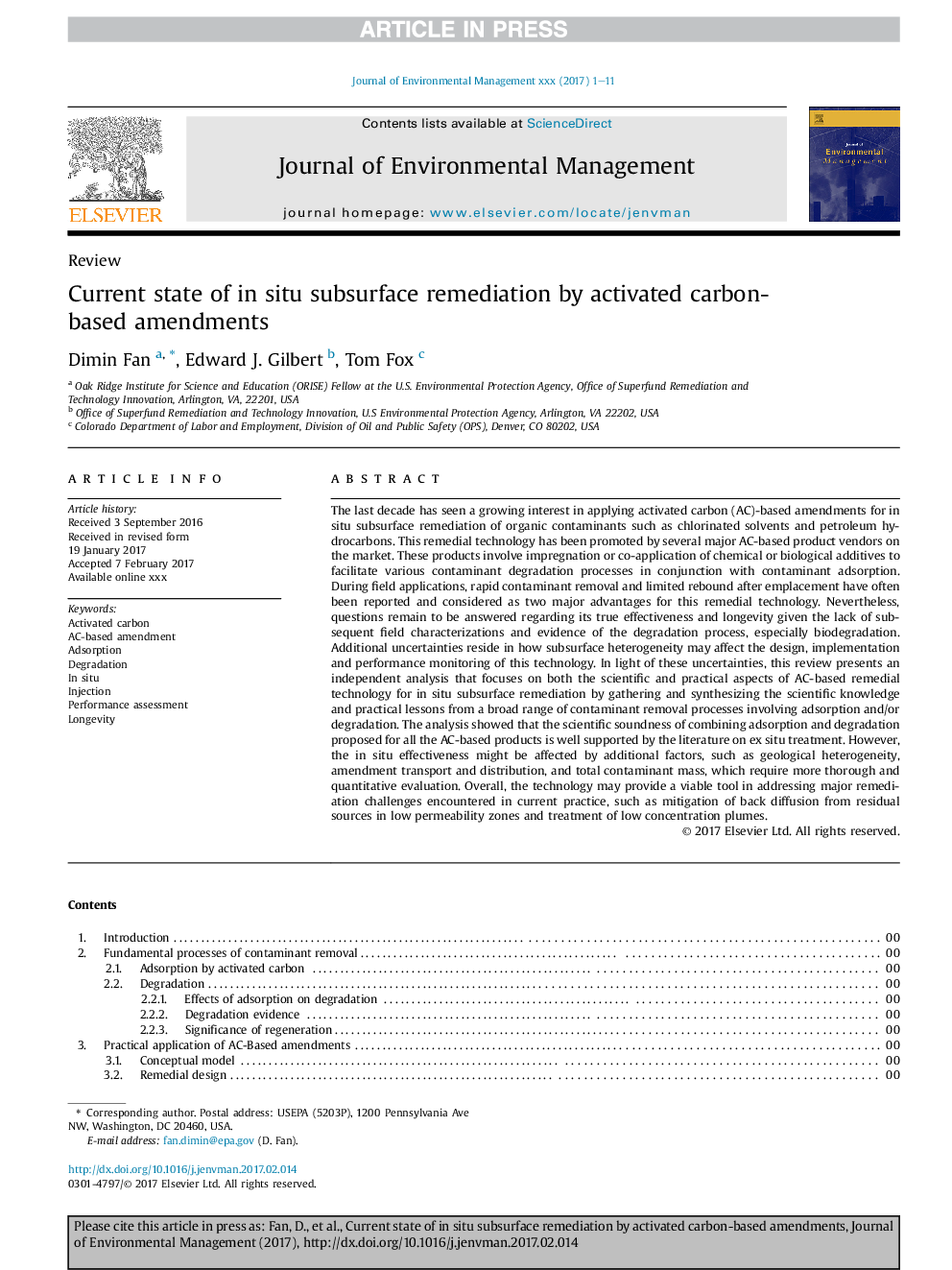| کد مقاله | کد نشریه | سال انتشار | مقاله انگلیسی | نسخه تمام متن |
|---|---|---|---|---|
| 7478773 | 1485215 | 2017 | 11 صفحه PDF | دانلود رایگان |
عنوان انگلیسی مقاله ISI
Current state of in situ subsurface remediation by activated carbon-based amendments
دانلود مقاله + سفارش ترجمه
دانلود مقاله ISI انگلیسی
رایگان برای ایرانیان
کلمات کلیدی
موضوعات مرتبط
مهندسی و علوم پایه
مهندسی انرژی
انرژی های تجدید پذیر، توسعه پایدار و محیط زیست
پیش نمایش صفحه اول مقاله

چکیده انگلیسی
The last decade has seen a growing interest in applying activated carbon (AC)-based amendments for in situ subsurface remediation of organic contaminants such as chlorinated solvents and petroleum hydrocarbons. This remedial technology has been promoted by several major AC-based product vendors on the market. These products involve impregnation or co-application of chemical or biological additives to facilitate various contaminant degradation processes in conjunction with contaminant adsorption. During field applications, rapid contaminant removal and limited rebound after emplacement have often been reported and considered as two major advantages for this remedial technology. Nevertheless, questions remain to be answered regarding its true effectiveness and longevity given the lack of subsequent field characterizations and evidence of the degradation process, especially biodegradation. Additional uncertainties reside in how subsurface heterogeneity may affect the design, implementation and performance monitoring of this technology. In light of these uncertainties, this review presents an independent analysis that focuses on both the scientific and practical aspects of AC-based remedial technology for in situ subsurface remediation by gathering and synthesizing the scientific knowledge and practical lessons from a broad range of contaminant removal processes involving adsorption and/or degradation. The analysis showed that the scientific soundness of combining adsorption and degradation proposed for all the AC-based products is well supported by the literature on ex situ treatment. However, the in situ effectiveness might be affected by additional factors, such as geological heterogeneity, amendment transport and distribution, and total contaminant mass, which require more thorough and quantitative evaluation. Overall, the technology may provide a viable tool in addressing major remediation challenges encountered in current practice, such as mitigation of back diffusion from residual sources in low permeability zones and treatment of low concentration plumes.
ناشر
Database: Elsevier - ScienceDirect (ساینس دایرکت)
Journal: Journal of Environmental Management - Volume 204, Part 2, 15 December 2017, Pages 793-803
Journal: Journal of Environmental Management - Volume 204, Part 2, 15 December 2017, Pages 793-803
نویسندگان
Dimin Fan, Edward J. Gilbert, Tom Fox,